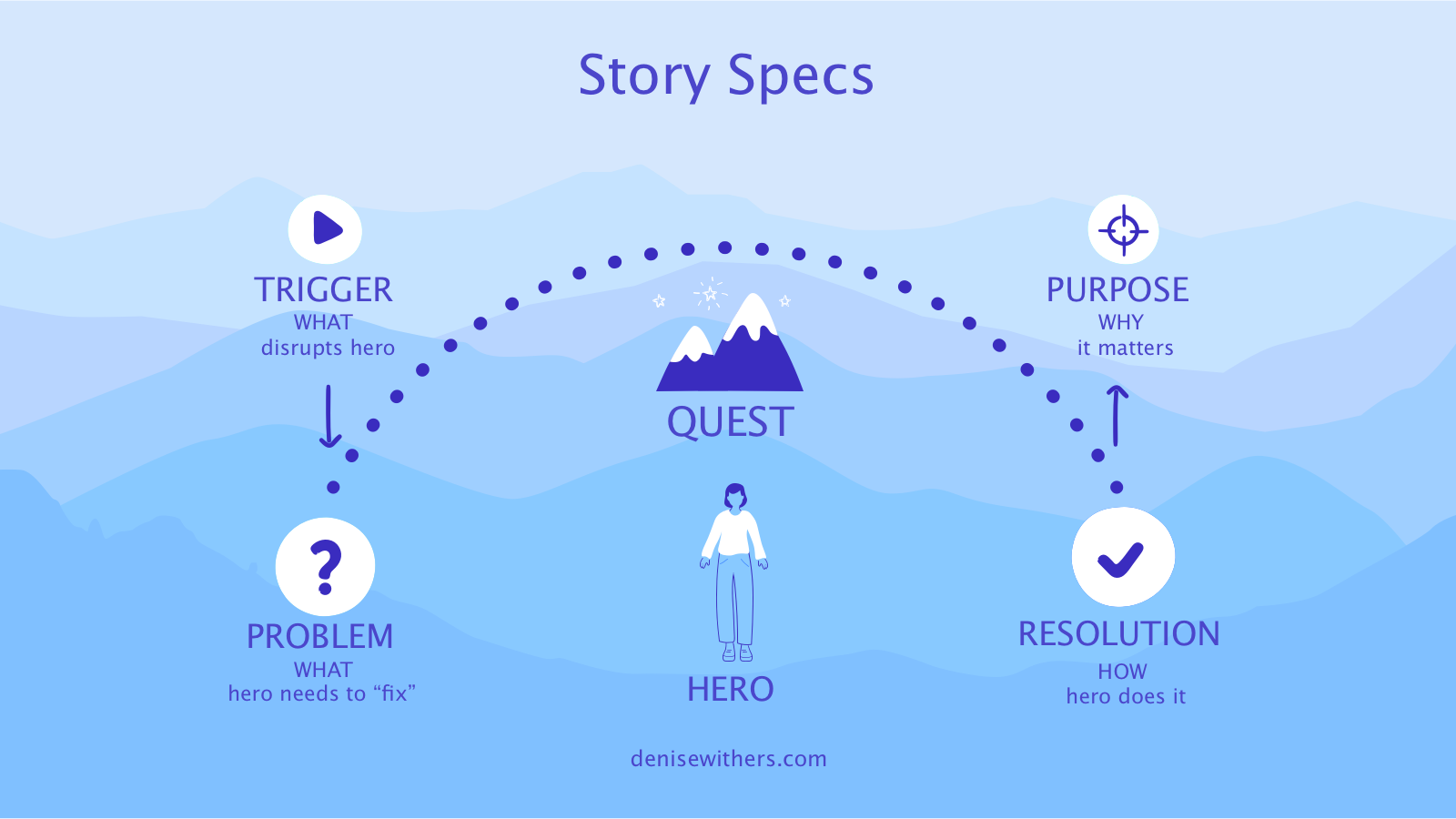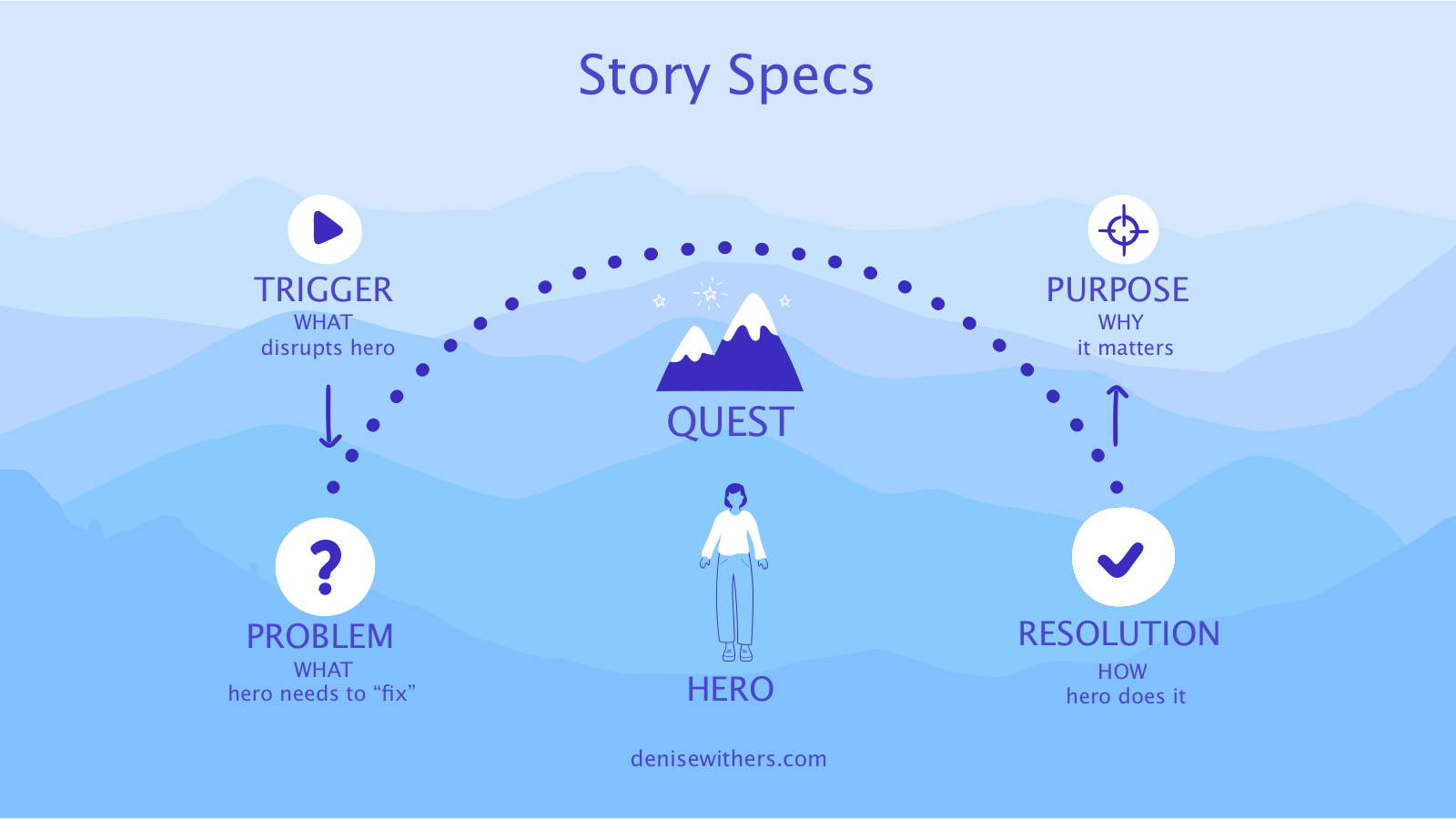There is one thing you need to understand about story. One thing that drives it and makes it work. You need to know this, before tackling the vagaries of archetypes and arch-enemies.
Stories are packages of problems and solutions.
— The telling of a story describes a quest to solve a problem.
Here’s how it works.
(Problem) The story hero runs into an unexpected problem or opportunity. They need to get something done. But they face obstacles, problems. Maybe they're missing knowledge, skills or equipment. Maybe there are bad guys.
(Quest) So they go off on a “quest” to figure out how to solve the problem. It might be a physical or emotional or cognitive quest. During the quest, they try a bunch of different things to come up with the right solution. And they usually fails several times.
(Solution) Finally, they resolve the situation. They either solve the problem – die trying – or give up.

This foundational structure is what makes stories engaging, memorable and informative. We’ll dive into ways to use this story structure in future posts. For now, try practicing your story recognition and analysis skills. When you’re reading or listening to something, see if you can figure out whether you’ve encountered a story. Is there a problem? A quest? A solution? Who is the hero and what do they need to do? Despite all the marketing hype you hear these days, not everything is a story. If there isn’t a problem, then it isn’t a story. And it won’t have the same impact.
Here are a few well-known stories and their problems to get you started.
- Romeo and Juliet: Two lovers need to escape their family feud.
- Star Wars: Luke has to crush the Galactic Empire.
- Harry Potter: Harry has to outlive Lord Voldemort.
- Lord of the Rings: Frodo has to destroy the ring of power.
- The Matrix: Neo has to save Zion and his people.
- The Wizard of Oz: Dorothy needs to get home.
Now see if any of these sound like familiar story lines.
- I can’t find my car keys and am late for work —
- My client changed the deadline and I’m short-staffed —
- We need to consolidate these three services into one —
With a little practice at finding the problems that drive stories, you'll start to strengthen your narrative intelligence and be able to not only tell more compelling stories quickly but also analyze stories to figure out what problems you really need to solve.





